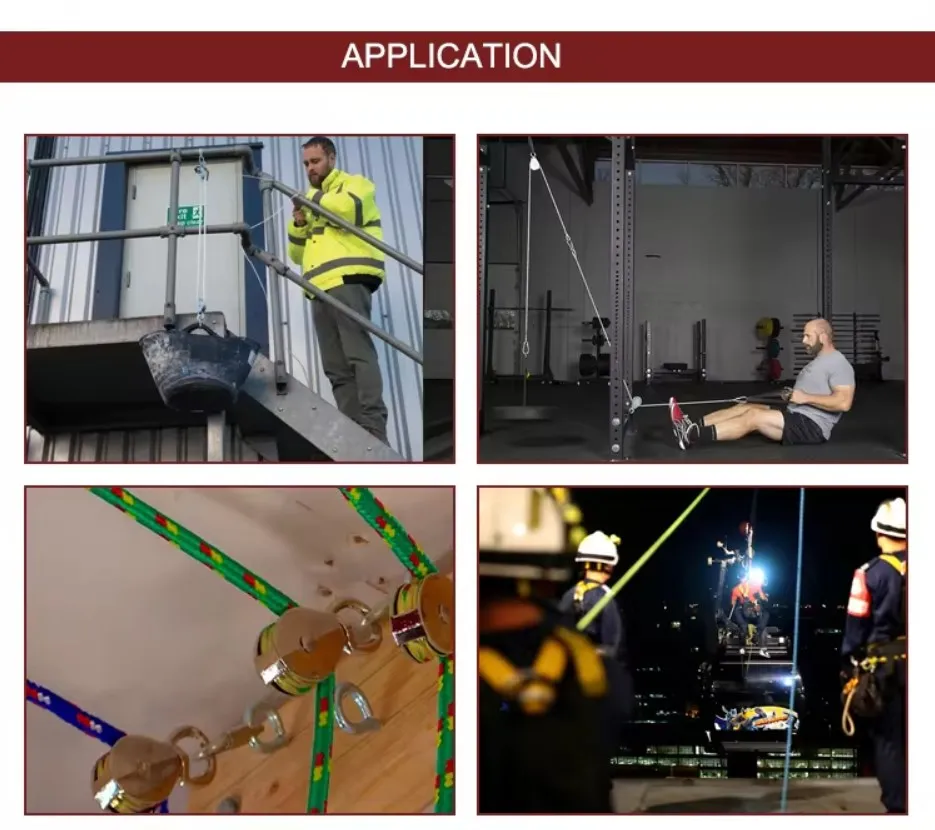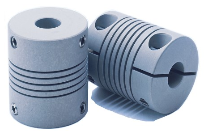Machinable Bore Clamping Shaft Coupling
Machinable Bore Clamping Shaft Coupling
If you are looking for a high-precision, customizable, and easy-to-install shaft coupling, consider the machinable bore clamping shaft coupling. This type of shaft coupling can provide excellent performance, stability, and versatility for a wide range of applications. In this article, we will explore the features, benefits, and applications of the machinable bore clamping shaft coupling, as well as some tips for selecting and customizing the right coupling for your needs.

What is a machinable bore clamping shaft coupling?
A machinable bore clamping shaft coupling is a type of coupling that connects two shafts in a rotating system. It consists of two hubs, one with an outer clamping surface and the other with an inner clamping surface, and a slotted elastomer insert that fits between the hubs. The insert is compressed by tightening the screws on the outer hub, which creates a tight and secure grip on both shafts. The machinable bore clamping shaft coupling can accommodate different shaft diameters and misalignments, and it can transmit torque without inducing vibration or noise.
Features and benefits of the machinable bore clamping shaft coupling
1. Customizable bore diameter
The machinable bore clamping shaft coupling can be easily customized to fit any shaft diameter, which saves time and money for users who need to adapt the coupling to different machines or components. The user can simply machine the inner bore of the coupling to match the shaft diameter, without the need for special tools or equipment.
2. High torsional stiffness
The machinable bore clamping shaft coupling can provide high stiffness and torque transmission, thanks to its elastomer insert that can handle both axial and radial loads. This means that the coupling can maintain a precise and stable rotation speed, even under heavy loads or sudden changes in direction.
3. Easy installation and maintenance
The machinable bore clamping shaft coupling can be installed and removed quickly and easily, without the need for complex alignment or disassembly procedures. The user can simply loosen or tighten the screws on the outer hub, depending on the desired grip or release force. The coupling also requires minimal maintenance, as the elastomer insert can resist wear, corrosion, and fatigue.
4. Low backlash and vibration
The machinable bore clamping shaft coupling can minimize backlash and vibration, which can improve the accuracy, efficiency, and reliability of the rotating system. The coupling can absorb shock and dampen resonance, thanks to its flexible elastomer insert that can compensate for misalignments and shaft runouts.
5. Wide application range
The machinable bore clamping shaft coupling can be used in various industries and applications, such as machine tools, robotics, automation, aerospace, medical equipment, and renewable energy. The coupling can handle high speeds, high temperatures, and high precision requirements, and it can adapt to different shaft materials and configurations.

How much does it cost to replace a drive shaft coupling?
The cost of replacing a drive shaft coupling can vary depending on several factors, such as the type of coupling, the size of the shafts, the labor and material costs, and the location and availability of the service. On average, the cost can range from $100 to $500, including parts and labor. However, some couplings may require more specialized tools or skills, which can increase the cost. It is recommended to consult with a professional technician or manufacturer to get an accurate estimate and to ensure that the replacement is done correctly and safely.
Types of coupling
There are several types of couplings available on the market, each with its own advantages and limitations. Some of the most common types are:
1. Gear coupling
A gear coupling uses multiple teeth on each hub to transmit torque and motion between two shafts. It can handle high loads, misalignments, and shock, but it may produce more noise and require more lubrication than other types of couplings.
2. Disc coupling
A disc coupling uses thin metallic discs that flex and bend to compensate for misalignments and transmit torque. It can provide high accuracy, stiffness, and speed, but it may be more sensitive to temperature and vibration.
3. Jaw coupling
A jaw coupling uses elastomer inserts that grip and compress the shafts, providing a flexible and vibration-damping connection. It can be easy to install, maintain, and replace, but it may have a lower torque capacity and wear faster than other types of couplings.
4. Oldham coupling
An Oldham coupling uses three disks that slide and rotate on two perpendicular axes, providing a constant velocity ratio and a zero backlash connection. It can maintain a precise angular orientation and prevent misalignments and shocks, but it may require more space and alignment than other types of couplings.

What is a marine shaft coupling?
A marine shaft coupling is a type of coupling that connects the propeller shaft to the engine or transmission in a marine vessel. It is designed to withstand the harsh and corrosive environment of seawater, as well as the vibrations and loads generated by the propeller and the waves. The marine shaft coupling can also allow for some axial and radial movement of the shafts, to compensate for the flexing and bending of the hull and the propeller shaft. Some marine shaft couplings may also have a flexible disc or a hydraulic damper to reduce vibrations and noise.
How to select or customize the right shaft coupling?
Selecting or customizing the right shaft coupling depends on several factors, such as the application requirements, the shaft sizes and materials, the environmental conditions, and the budget and preferences. Here are some parameters to consider:
1. Shaft diameter and fit
The coupling should have an appropriate bore diameter and fit for the shafts, to ensure a secure and accurate connection. The user should measure the shaft diameter and tolerance, as well as the coupling’s bore diameter and tolerance, and calculate the interference or clearance needed. The user should also consider the shaft’s material, surface finish, and hardness, and choose a coupling material and surface treatment that can provide a good grip and corrosion resistance.
2. Torque and power rating
The coupling should have a torque and power rating that can handle the maximum load and speed of the system, as well as the dynamic and static factors that affect the torque transmission. The user should calculate the torque and power requirements, and choose a coupling that can provide a safety margin and a reliable performance. The user should also consider the coupling’s stiffness, damping, and resonance frequency, and choose a coupling that can minimize vibration and noise.
3. Misalignment and compensation
The coupling should have a misalignment and compensation capability that can accommodate the expected misalignments and shaft movements, as well as the thermal and mechanical changes that affect the system. The user should calculate the allowable misalignment and offset, and choose a coupling that can provide a sufficient range of angular and parallel misalignment, as well as a low backlash and a smooth transfer of motion. The user should also consider the coupling’s flexibility, damping, and natural frequency, and choose a coupling that can mitigate shock and resonance.
4. Environmental and safety factors
The coupling should have an environmental and safety rating that can withstand the conditions and hazards of the system, as well as the regulations and standards that apply to the application. The user should consider the coupling’s temperature, humidity, corrosion resistance, and flammability, and choose a coupling that can provide a suitable level of protection and performance. The user should also consider the coupling’s certification, testing, and inspection requirements, and choose a coupling that can comply with the relevant codes and norms.
5. Cost and availability
The coupling should have a cost and availability that can match the user’s budget and schedule, as well as the quality and reputation that ensure a satisfactory purchase. The user should compare the prices and features of different couplings, and choose a coupling that can provide a good value for money and a reasonable lead time. The user should also consider the coupling’s warranty, service, and technical support, and choose a coupling that can offer a reliable and responsive assistance.

About HZPT
HZPT was founded in 2006, located in Hangzhou, China. Our factory covers an area of 1700 square meters, with a total construction area of 30000 square meters. We specialize in designing, manufacturing, and selling high-precision gearboxes, including planetary gearboxes, helical bevel gearboxes, and custom-made reducers. We have 4 patents for producing high-torque, high-precision planetary gearboxes. Our gearboxes are available in more than 10 series and thousands of specifications, and can be customized to meet various performance and application requirements. We have been serving various industries, such as machine tools, robotics, automation, aerospace, medical equipment, and renewable energy, for more than 20 years, and have gained a reputation for quality, reliability, and innovation.
Why choose HZPT?
There are several reasons why you should choose HZPT as your partner for shaft couplings:
1. Extensive experience and expertise
We have more than 20 years of experience and expertise in designing, manufacturing, and selling shaft couplings, as well as other types of gearboxes and reducers. We have a team of skilled engineers and technicians who can provide customized solutions and technical support for your specific needs and challenges.
2. High-quality and high-performance products
We use only the best materials, components, and processes to produce our shaft couplings, ensuring that they can deliver the highest quality and performance for your applications. We test every product before shipping, to ensure that it meets all the specifications and requirements.
3. Competitive prices and fast delivery
We offer competitive prices and fast delivery for our shaft couplings, thanks to our efficient production and supply chain management. We can also provide customized packaging and branding, to meet your marketing and logistics needs.
4. Comprehensive after-sales service
We provide comprehensive after-sales service for our shaft couplings, including warranty, repair, maintenance, and replacement. We also have a 24-hour customer service hotline, to answer your questions and concerns at any time.
5. Commitment to innovation and sustainability
We are committed to innovation and sustainability, and invest in research and development, as well as environmental protection and social responsibility. We constantly improve our products and processes, and seek to minimize our impact on the environment and society.
If you need a reliable and high-performance shaft coupling, please contact us at [insert contact information]. We will be happy to assist you and provide you with the best solution for your needs.






